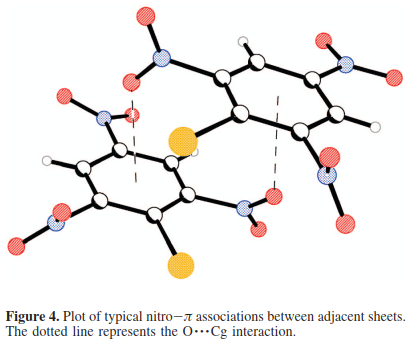There is also a single crystal structure investigation (1) of polymorphism among picryl bromide structures. Geometry of the molecule in crystal structure is a little bit different, showing bigger difference in $\ce{C - N}$ bonds: 1.483 and 1.493 (ortho) vs 1.461 (para) in comparison with the calculated one for the gas phase:

I tried to align the molecule in the same way as it's been done by @pH13-Yet anotherPhilipp for better visual comparison. It's also worth noticing that in real crystal structure nitro groups are more tilted due to interlayer interactions:

(1) Parrish, D. A.; Deschamps, J. R.; Gilardi, R. D.; Butcher, R. J. Crystal Growth & Design 2008, 8 (1), 57–62. DOI: 10.1021/cg700727n




